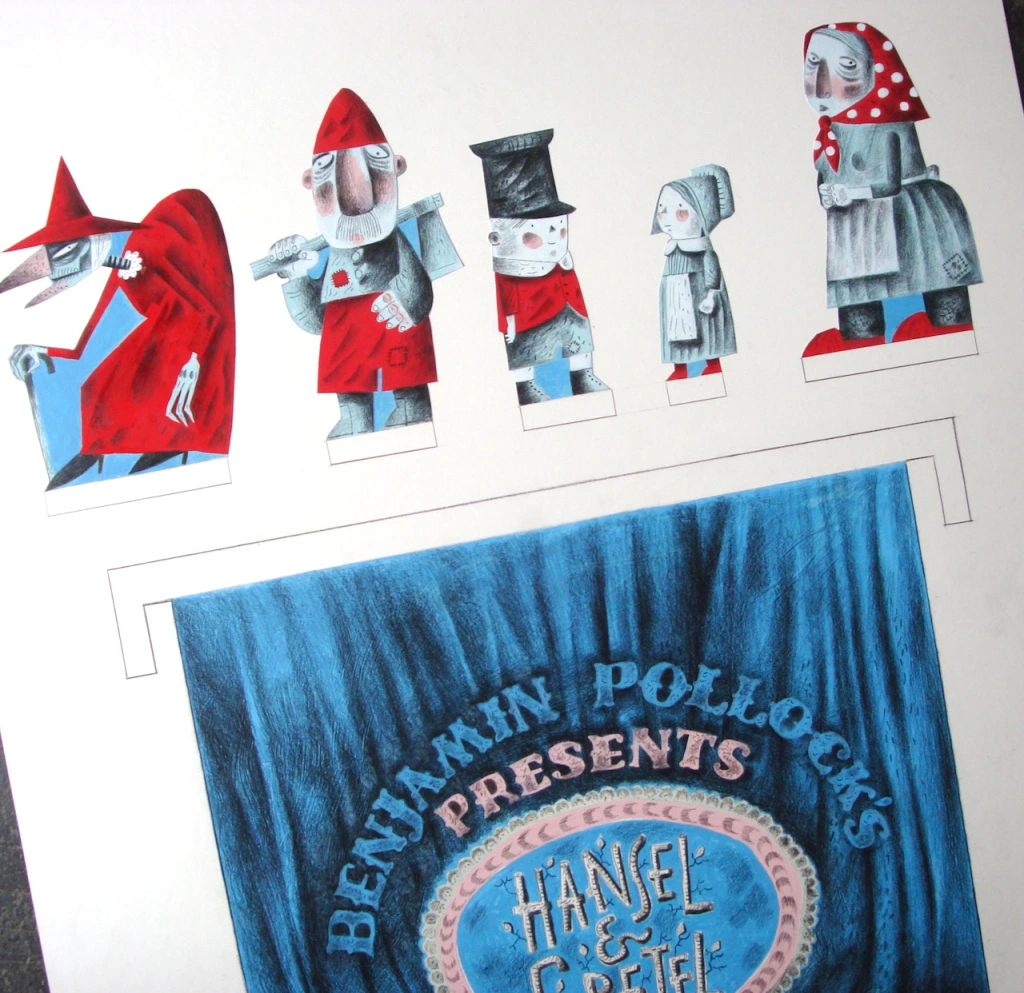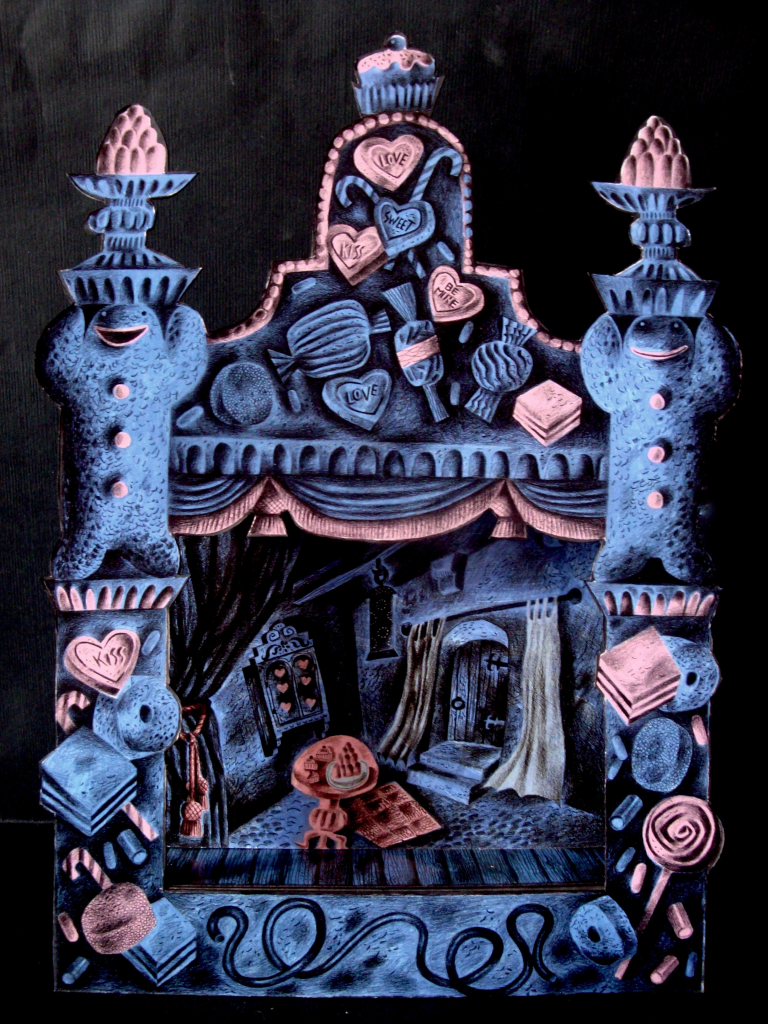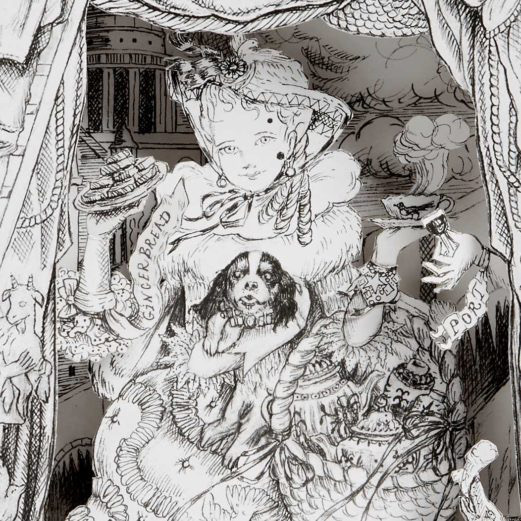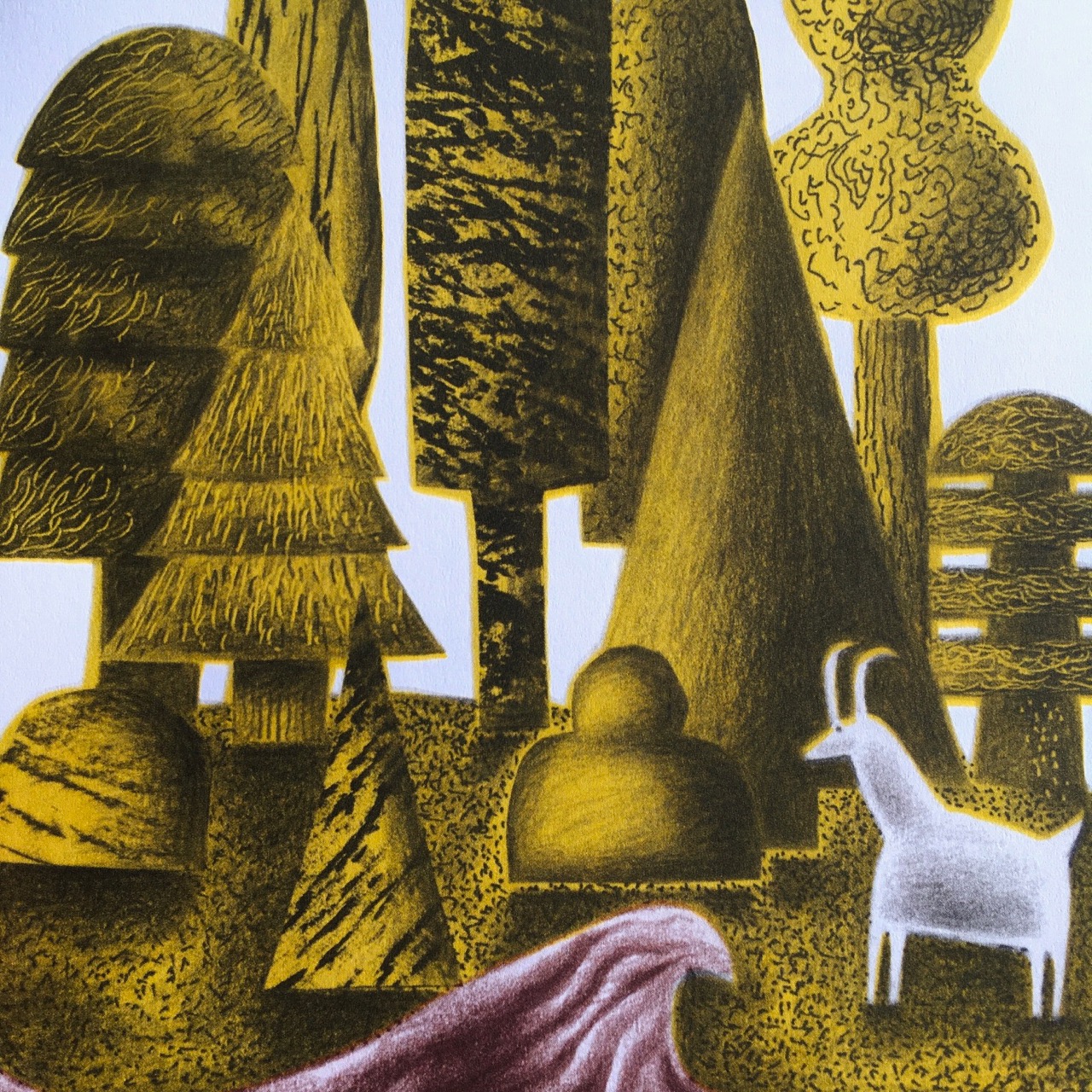From the Forest to the Fantastical
Clive Hicks-Jenkins Interviewed by Simon Seddon
I designed the Hansel & Gretel Toy Theatre for Benjamin Pollock’s Toyshop in 2016 and it was published in 2017. It’s still available at the shop, having been re-printed several times. It comes as a 6 x A4 sheet kit in an envelope, requiring a craft-scalpel, cutting mat and glue to assemble. The original commission had been to create a ‘model’ theatre with a couple of scenes and characters to display, but by the end of the project I’d created a complete toy theatre at a small scale, with instructions for building the stage, together with scenery and characters to perform the play script I adapted from the fairy tale, and even a theatre poster to advertise a performance.

During the Covid lockdowns, in solidarity with the difficulties faced by all small shopkeepers trying to run their businesses, I gave the rights of the Hansel & Gretel Toy Theatre to Benjamin Pollock’s Toyshop, so the business would no longer be obliged to pay me royalties. It was a small but I hope significant gesture of support during very hard-to-negotiate times.
Simon was a wonderful interviewer. He’d undertaken meticulous and lengthy research and was well prepared to take me back along the pathway to childhood and the roots of my love of toy theatre. We could have talked for days about our shared passions for folk art, the Erzgebirge tradition of toys and the magic of toy theatre, but in the end we had to wrap it up in just under an hour. Simon is the artist behind the wonderful shadow-boxes published by Benjamin Pollock’s Toyshop, some still available at the Pollock’s online store.
Little Red Rosalee
Pantomime Feast
Frostiana
Fortune Carousel
Peter Pan
The Little Mermaid
Alice in Wonderland
Above: detail from Simon’s Frostiana shadow box.













 …
…